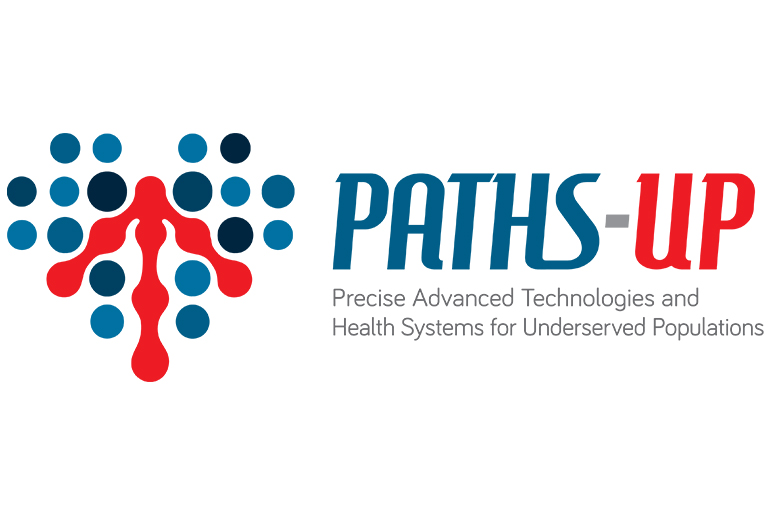
Diagram of PATHS-UP thrusts 1-4, with five-year technology (lab in palm) and 10-year technology (lab on wrist).
A Texas A&M University-led consortium of university and industry partners was recently awarded a National Science Foundation (NSF) Engineering Research Center (ERC) grant on Precise Advanced Technologies and Health Systems for Underserved Populations (PATHS-UP) for studying remote wearable technology to help people monitor and manage diabetes and heart disease in underserved communities.
The NSF ERC is one of the most significant engineering grants that an institution can receive. It is an interdisciplinary initiative that connects academia, industry and government partners to integrate engineering research and education with technological innovation to transform national prosperity, health and security.
PATHS-UP is initially funded by a five-year base award of $19.75 million. This can be renewed for another $15.56 million over an additional five years. ERCs often become self-sustaining and typically bring in more than $50 million in federal and industry research funding during their first decade. The grant will be administered through the Texas A&M Engineering Experiment Station (TEES).
The PATHS-UP proposal development was a two-year collaborative effort led by Dr. Gerard Coté, professor of biomedical engineering and director of the Center for Remote Health Technologies and Systems (CRHTS). Dr. Mark Lawley, head of the Department of Industrial and Systems Engineering and CRHTS deputy director, was also heavily involved in writing and coordination. The grant eventually involved four universities, dozens of researchers and many industrial partners. PATHS-UP will have four research thrust areas: (T1) implantable sensors for biomarker monitoring, (T2) optical imaging for sensor reading, (T3) user-centered wearable design and (T4) remote data analytics for population health (see figure).
Industrial and systems engineering department collaborators include Lawley and Dr. Farzan Sasangohar, assistant professor. Lawley will focus on thrust 4, which involves extracting actionable information from real-time data streams. Computer algorithms will be developed to quantify short-, medium- and long-term patient risks and to initiate and track interventions that help patients manage daily health and avoid hospitalization (methods that Lawley refers to as “remote health analytics”).
Sasangohar will work with a team of researchers focused on stakeholder development in under-served areas of south Texas, Los Angeles and Miami. This work will focus on collecting perspectives on remote technologies from patients, nurses, health educators, primary care physicians and many others, and synthesizing these perspectives into design requirements. This vital work will ensure that the technology is fully functional and easy to use from the human’s perspective.
“The research made possible through this grant has the potential to improve the lives of millions throughout the world,” said Lawley. “I am honored to play a role.”